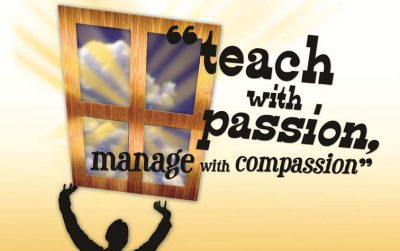Dynamic New Virtual Field Trips From Discovery Education and Social Impact Partners Help Students Explore STEM in the World Around Them
The following is a new blog post related to education and teaching and relevant to our website visitors. The blog post is not based on the opinions or values of our company but is related to education and teaching, so we wanted to share it with YOU! If you ever have any questions please let us know. Now… on to the post!

To help students explore the exciting the many ways STEM is shaping the world around them, Discovery Education and leading corporate and community partners proudly introduce four new engaging, no-cost virtual field trips (VFTs). Learn more and register for the new virtual field trips and find all the resources here.
Discovery Education offers educators, students, and families hundreds of no-cost, on-demand VFTs that empower educators to provide all students with access to remarkable learning experiences that connect what students are learning to the outside world wherever instruction is taking place.
Power of Cooperatives Virtual Field Trip with CHS Foundation
Premiere: October 7th at 1 PM ET
Dig into the exciting ways the agricultural cooperative (co-op) business model is connecting communities and inspiring everyday innovation with this new virtual journey. Students will trace the lifecycle of a crop from the ground up to see how collaboration and creativity are combined to nourish communities, solve problems, and improve lives. Along the way, students will meet a variety of real-world co-op professionals who reveal the STEM innovations that today’s farms are using to stay productive. This virtual field trip is appropriate for students in grades 9-12.
CHS Foundation and Discovery Education partnered to create Cooperative Minds, an educational initiative immersing high school students nationwide in the dynamic ingenuity and collaborative spirit of the cooperative business model. Empower students to sow the seeds of success with no-cost, standards-aligned resources that explore essential careers and endless possibilities in agricultural cooperatives.
Moving to Market Virtual Field Trip with Toyota
Premiere: October 12th at 1 PM ET
Celebrate the dynamic movement of the supply chain as students follow the lifecycle of automotive parts travelling from manufacture to their final destinations all over the country. Along the way, a variety of real-world professionals will show students how their everyday passion and problem-solving help to support Toyota’s mission of providing Mobility for All. Find out how the many moving parts of the auto supply chain come together through a combination of complex machines, ingenious processes, and the commitment of a talented team. This virtual field trip is appropriate for students in grades 6-8.
With the goal of inspiring students to solve the transportation challenges of the future, Toyota has expanded a partnership with Discovery Education to launch Keys to Connect. The new educational initiative offers educators, students, and families no-cost, standards-aligned digital resources that empower all learners to become solution seekers focused on sustainability and inclusivity.
The Future is Now Virtual Field Trip with Edge at Hudson Yards
Premiere: November 4th at 1 PM ET
Take students on a virtual adventure into New York City’s newest and most forward-thinking neighborhood to explore new horizons in community building and a behind-the-scenes look at the amazing architecture and engineering innovations at Edge, the highest outdoor skydeck in the Western Hemisphere. This virtual field trip is appropriate for students in grades 4-12.
Reach for the Sky, a new initiative from Edge at Hudson Yards and Discovery Education, catalyzes hands-on, experiential teaching and learning by giving classrooms nationwide a virtual pass to the neighborhood of the future. Inspire students to take action while supporting underserved communities with access to engaging digital educational resources showing students how big ideas and cutting-edge technology improve lives and revolutionize communities.
![]() Your Heart Virtual Field Trip with Abbott
Your Heart Virtual Field Trip with Abbott
Premiere: November 9th at 1 PM ET
The human heart beats 100,000 times a day. To show how this body engine works, two students will explore the fascinating structure and function of the heart with Abbott scientists and doctors – and join U.S. Olympian Lolo Jones to learn how to keep your heart healthy! This virtual field trip is appropriate for students in grades 5-8.
To help families learn together about how to stay healthy and physically fit, Future Well Kids – an educational initiative from Abbott, the Abbott Fund, and Discovery Education – offers families no-cost digital resources designed to help create a healthier future for kids.
Each virtual experience features accompanying educator resources and student activities that make it easy for teachers to incorporate rich media into the learning experiences they design and deliver every day.
“Virtual field trips are a fun – and easy – way to connect what I am teaching in my classroom to the real world,” said Linda Hixson, technology teacher at Shenandoah Valley Jr/Sr High School of the Shenandoah Valley School District. “With the new VFTs from Discovery Education and their partners, I always know I have something fresh to more deeply engage my students and broaden their horizons. I’m looking forward to finding ways to build these into my classroom activities.”
Explore more Virtual Field Trips on-demand:
20th Anniversary of 9/11: A Day for Good Deeds Virtual Field Trip
My Good Deed
Grades 5–12
Identity, Belonging, Legacy Virtual Field Trip
Teaching with Testimony | USC Shoah Foundation
Grades 8–12
Discovery Education’s Virtual Field Trips can be found within the company’s recently enhanced K-12 learning platform on the Virtual Field Trips channel or in the Social Impact Partnerships channel.
Time To Teach reviews each blog post by our contributors but if you feel this is a blog post better suited for another page please let us know.
Teachers and Educators are our heroes. We want to thank you for the work you do!
Yours In Education!
Time To Teach





 Books I finished reading (or rereading) in August 2021…
Books I finished reading (or rereading) in August 2021…


